Because Your TV Isn’t Just for Playing a Loop of a Burning Log
Contrary to what your Instagram feed might suggest right now, that high tech black box against your wall was not designed to be a digital alternative to your fireplace. Screens have been bringing us Yuletide cheer almost as soon as they started telling us stories, as if the inventors of motion pictures saw Christmas stories as the medium’s highest calling. Perhaps that’s why there’s no shortage of movies to choose from this time of year. Just ask our resident holiday movie expert, Sharon Autenrieth, currently in the second year of her Holiday Rom-Com-athon, watching another 50 movies to raise money for the non-profit Twigs. As she recently wrote, “There are just too many dang movies. I keep DVR-ing, and yet every time I check the Hallmark schedule there are dozens more movies I haven’t seen.”
So don’t get us wrong—this list of Christmas must-watches isn’t in any way complete. But it is a list of some of our most beloved holiday pictures, from classics to horror to drama to, yes, romantic comedy. They also range from “expected” to obscure picks, and one of our writers just couldn’t resist selecting two titles. Feel free to let us know what we missed in our Facebook group—we’ll need something else to keep that faux inferno off our screens after we finish these!
Peace on Earth
DIRECTED BY HUGH HARMAN/1939
By Jim Tudor
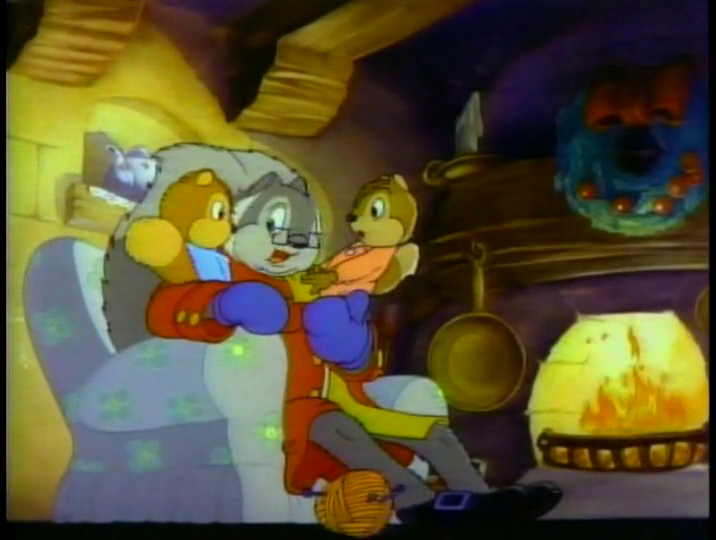
This classic if now under-seen eight-minute Oscar nominee for Best Animated Short opens on a quiet snowcapped village as the choirly refrains of “Peace on Earth” ushers us to a wreathed wooden door. It’s only a moment or so prior that we notice that several of the houses appear to be WWI-era German military helmets. A moment before that, during a serene panning shot, an abandoned Gatling gun could be seen on a lonely hillside.
Nevertheless, a merry old grandpa squirrel arrives for a Christmas visit, his bright red overcoat lighting up the room and the frame. “Peace on Earth, goodwill to men!” he happily repeats. As the pajamaed grandsquirrels snuggle onto his lap by the fire, he is asked about these “men” he refers to. And with that, he knows the story he will tell. His opening to the story, delivered with all the affable zest of Master Yoda, is quite the grabber: “Well, there ain’t no men in the world no more, sonnies!” No more men.
From there, we go into his dark tale of how this race of upright-walking warmongering monsters came to completely annihilate itself. Scenes of what we know to be trench warfare play out in muddy and unsettling montage, culminating with the final two men shooting one another dead from their opposing sides. They would fight over anything: the flat-footed versus the non-flat-footed; the vegetarians versus the meat-eaters; and so on. Finally, that was that. “I’m sure glad there’s no more men, Grandpa!” Somehow, before the end, the kiddos have drifted off to sleep, smiling in their slumber. If this kind of bedtime story brings them such heavenly peace, I’d hate to know what they’d consider too scary.
Perhaps the children took solace in the out-of-context scripture reading of Isaiah 61:4, which the surviving animals took to heart: “Ye shall rebuild the old wastes.” From there, the critters of the wild took to reappropriating the remnants of humanity into their own army surplus Smurf village, happily ever after.
Peace on Earth, a lavishly crafted cartoon from MGM, is celebrated in animation circles as the finest hour of its creator, Hugh Harman. Harman, who along with his professional partner Rudolf Ising, managed to Forrest Gump their way from one animation studio to another, finding themselves repeatedly in positions of power at crucial times in the development of said studios. Among their notable achievements is the launch of the Looney Tunes series for producer Leon Schlesinger. Peace on Earth, imbued with MGM’s “unlimited budget” (which Harman & Ising nevertheless managed to strain) is indicative of a very bright, singular moment when, ever so briefly, a competitor of the time managed to match or even top Disney.
But would Disney have ever gone ahead with a short as jarringly cozy and disturbing as this? When I show the Oscar-nominated Peace on Earth to my History of Animation classes, it’s not uncommon to draw a reaction of astonishment. “There’s ‘NO MORE MEN’, he just laughs and tells them?!” Nope, no more men. But still, “By golly, it’s a great old world!”
Meet Me in St. Louis
DIRECTED BY VINCENTE MINNELLI/1944
By David L. Gill
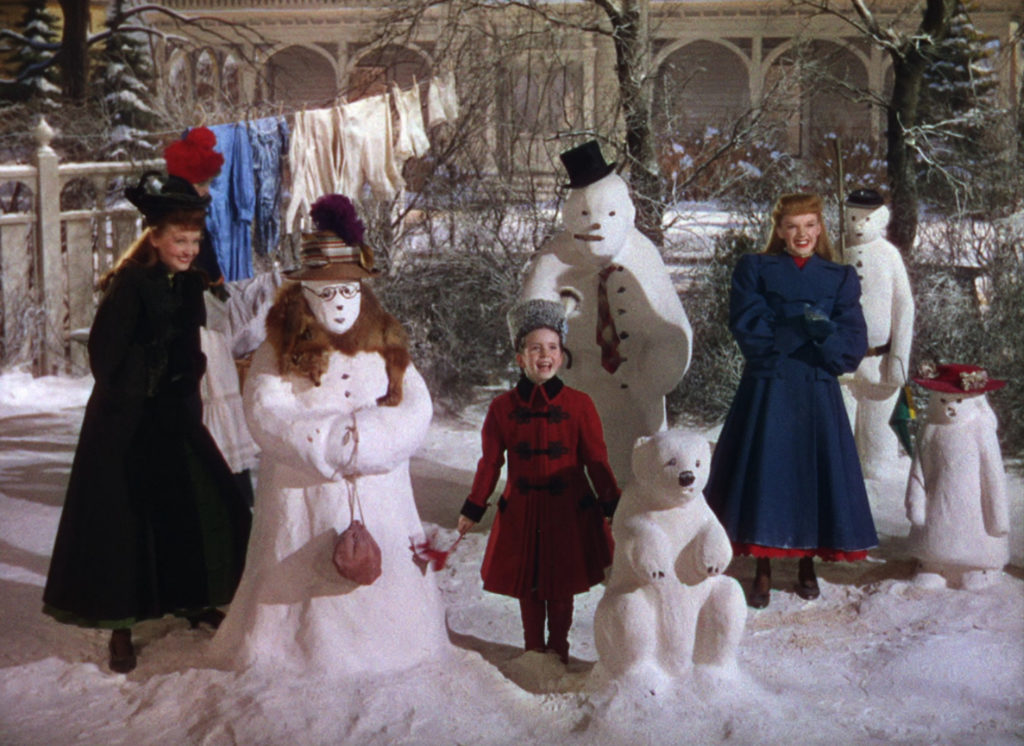
When I re-watched this movie for the umpteenth time to write this review, I got no further than the introduction on the DVD from Liza Minnelli talking about the film before I was in tears. This is one of my favorite holiday films, and Minnelli discloses it’s probably her favorite of her mother’s films. It’s also the film in which Minnelli’s parents met and fell in love…which shows. But more on that later.
Before I launch in, I feel the need to explain why I think this is a Christmas movie. First, I must say that if Die Hard is, in fact, a Christmas movie, this movie certainly meets the minimum threshold.
Second, while it takes an entire year to play out, the climax of the film takes place during Christmas. The threads of story related to the family come together given the realities during the Christmas season and the epilogue at the Fair itself is just that, an epilogue showing that the climax wasn’t false. The Christmas scenes show the longing and expectation of Advent and Christmas rolled into conflict and resolution in a beautiful moment between two sisters, one of whom is singing “Have Yourself a Merry Christmas.” Meet Me in St. Louis is truly a beautiful Christmas film.
The Technicolor and choir are both vibrant from the moment the film begins. The song on which the title of the film is based opens the production and reappears throughout the first ten or so minutes of the film, handed off from one member of the family to another. This is honestly somewhat believable since the World’s Fair was scheduled to be in St. Louis the following year and the song would’ve been on everyone’s lips.
The sets are beautifully dressed, complete with gorgeous patterned carpets, wallpaper, and gas chandeliers. The crystal punch bowl during the party is quite substantial and a beautiful reminder that prior to last March, large groups of people could gather to drink, eat, and enjoy each other’s company. The statue in the foyer of the house, the tablecloth on the kitchen table, the smoke outlines around the pictures hanging in the hall all make this house seem like an idealized but lived-in house.
Each member of the family is introduced and supremely relatable if not likable. One of my favorite characters is Anna Smith, played by Mary Astor, who in 1944 had been acting in films for 20 years. She brings a wonderful gravitas to the role which might’ve been unremarkable from another actress. The scene in which Anna and Alonzo sing together after a big blow-up is one of the most touching moments in any film at any time.
The tour-de-force is brought by Judy Garland herself. The only complaint I’ve ever had for this film was likely a stylistic choice by director Vincente Minnelli: her love interest, John Truett (played by Tom Drake) is played to be extremely boring. This prevents anyone from being distracted in any of their scenes together and keeps the focus on the star of the film, but it makes her interest in him difficult to swallow at times. The rest of the relationships she has, with her sisters and with her brother Lon, are all very much believable.
“The Boy Next Door” is a beautiful love song to the object of one’s affection. The first time I heard it as a young man, I realized that Judy Garland understood me and my desire to be known by the people I found attractive. Photographed superbly and scored lushly, the song stands out as one of the best in the entire film.
“Skip to My Lou” is a beautiful 1940s treatment on a classic song, complete with claps that don’t match up with the soundtrack. At one point, the soundtrack has the partiers clapping on beats 2 & 4 but the actors are steadfastly clapping on 1 & 3—as one might very well expect extremely white partiers to do! Esther and Tootie soon sing a cakewalk, and it’s a delightful sisterly exchange between them. It leaves one wishing one had such siblings.
“The Trolley Song” is a wonderful romp of a song with beautiful lyrics, melody, choral arrangement, and costumes. When Esther sings, “STOP, STOP, STOP WENT MY HEARTSTRINGS,” it is a truly show-stopping moment. Equally satisfying to this reviewer is when she comes face-to-face with John Truett, she crawls into a shell that I wager was the actual acting task for our leading lady.
The Halloween sequence will likely surprise anyone who thinks this film is only smiles and bright colors. I won’t ruin the surprises, but I will tease it by saying that, after some shenanigans from the children, Esther gets rather—er—aggressive with John!
If you are looking for a wonderful, emotional, and uplifting film to watch this holiday season, take a look at Meet Me in St. Louis.
It’s a Wonderful Life + A Charlie Brown Christmas
DIRECTED BY FRANK CAPRA/1946 + BILL MELENDEZ/1965
By Robert Hornak
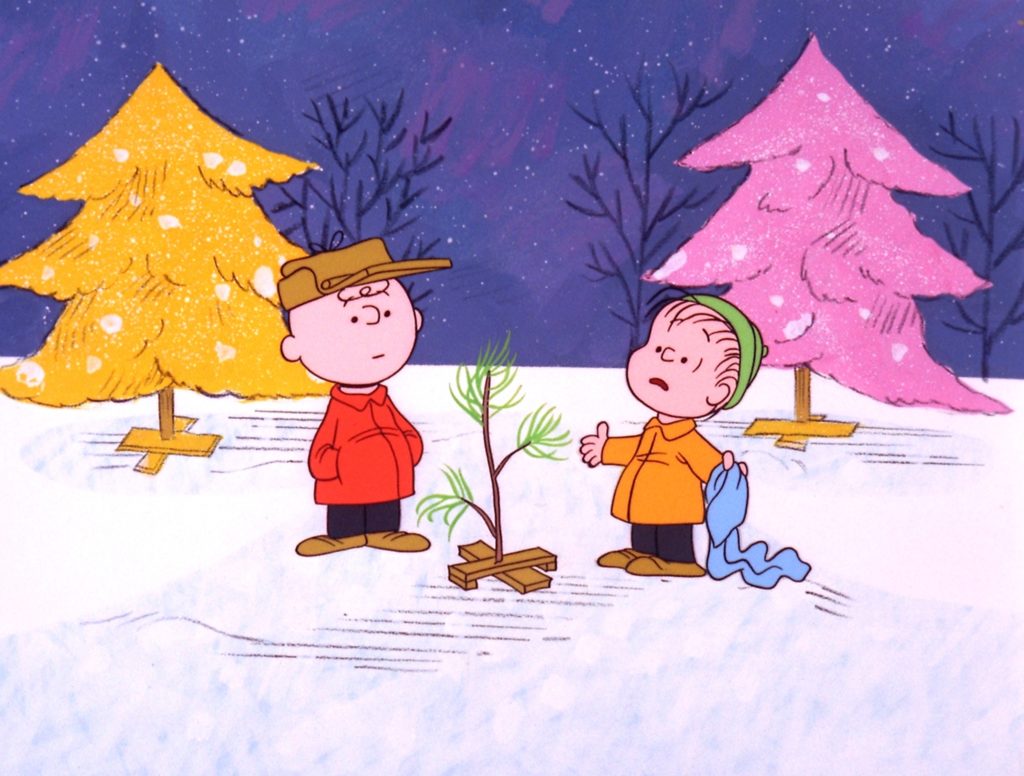
The two all-time champion bits of Christmastime secular sermonizing for millions of Americans are, as it happens, two of my favorites: It’s a Wonderful Life (1946) and A Charlie Brown Christmas (1965). They’re both so ubiquitous and expected that consumption of either is tantamount to your assumed third helping at the table, if not the automatic bow to a holy mandate writ long ago by the network television gods. But both beg the question: why? A quick glance at each of their essential stories makes for a trip down melancholy lane – fraught with questions of relevance and self-worth, and shot through with an open desire for self-immolation. How can we want to subject ourselves, even as we’re sitting around the living room with our dearest loved ones, to bald-faced considerations of suicide?
These are two diametrically opposed characters, but it’s not enough of an argument against their sameness to say that, well, Charlie Brown is so un-liked (note the first ever Peanuts strip with its haiku-like dialogue: “Here comes ol’ Charlie Brown. / Good ol’ Charlie Brown, yes sir. / Good ol’ Charlie Brown. / How I hate him!”) while George Bailey is so well-liked (Clarence: “It’s a good face. I like it. I like George Bailey!”). With all their obvious differences, tell me which story this describes: male protagonist is called upon to spearhead a beloved social tradition, but is eventually bogged down by assumptions of his own irrelevance, only to be surrounded at story’s end by a cheering and singing cohort of his closest family and friends. Charlie Brown is asked by Lucy to direct the kids’ Christmas play, an out-of-character request by a girl more likely to punch him in the face than to willingly place him in a position of authority over her—one gets the sly suspicion she’s setting him up for failure. George Bailey is asked by the council to take over his dead father’s handling of the building and loan, the struggling outfit that meagerly buttresses the town’s efforts to stay afloat financially.
Both characters imbue their assigned effort with a rallying cry against the innately destructive forces of capitalism: Charlie wants to strip his play of any hint of commercialization; George fights against the immovable greed of town ogre/oligarch Mr. Potter, who wants to dismantle the Building and Loan to centralize his already-trenchant power over the town. Knowing both stories are bulwarks against the commerce that we all know drives the season, we might feel a bit of undeserved redemptive validation: we’ll never admit that it’s the spirit of Christmas that makes us paper over the “reason for the season” with our own dollar bills, and these stories, so readily consumed, are our bid for “but that’s not me.” When George shouts down Potter, calling him “nothing but a scurvy little spider,” we like to think we’re on his side of the table, the noble Quixote with saber pointing to true north. But when we look closer, we might be more like string-fingered Uncle Billy trying to muddle through another series of rote responsibilities, Mary spending every ounce of energy hoping for a single person to finally recognize her goodness, or perhaps we’re Potter himself, lording it over the season with a proud sense of only needing those who need us.
But before the prose turns completely purple, back to the main point. To watch these stories is to willfully subject ourselves to deep, rich, wallowing darkness bordering on despair, and I submit it can’t just be we’re willing to withstand the onslaught of psychic trauma because we know the third-act redemption is coming. A Charlie Brown Christmas might be short, like a fable, allowing for a mere dip into the pantophobia of its main character, but It’s a Wonderful Life runs 130 minutes and spends a bulk of that time slowly cinching a Christmas tree ribbon so tightly around George’s neck we’re left flailing in darkness for well over an hour and a half. The release/catharsis at the end of both are legitimate and earned, but if we’re honest with ourselves, it’s also a little pat given all the graphic darkness that came before it. I submit that if there’s a reason we keep watching these, it’s not the angel getting its wings or the sad little tree getting its proper tinseling. It’s the valley of the shadow of death that we all feel like we’re living in most of the time. It’s the relatability of feeling unloved (Charlie) and unfulfilled (George) that draws us to love these characters as they are before the happy ending comes perfunctorily cheering and singing.
Black Christmas
DIRECTED BY BOB CLARK/1974
By Paul Hibbard
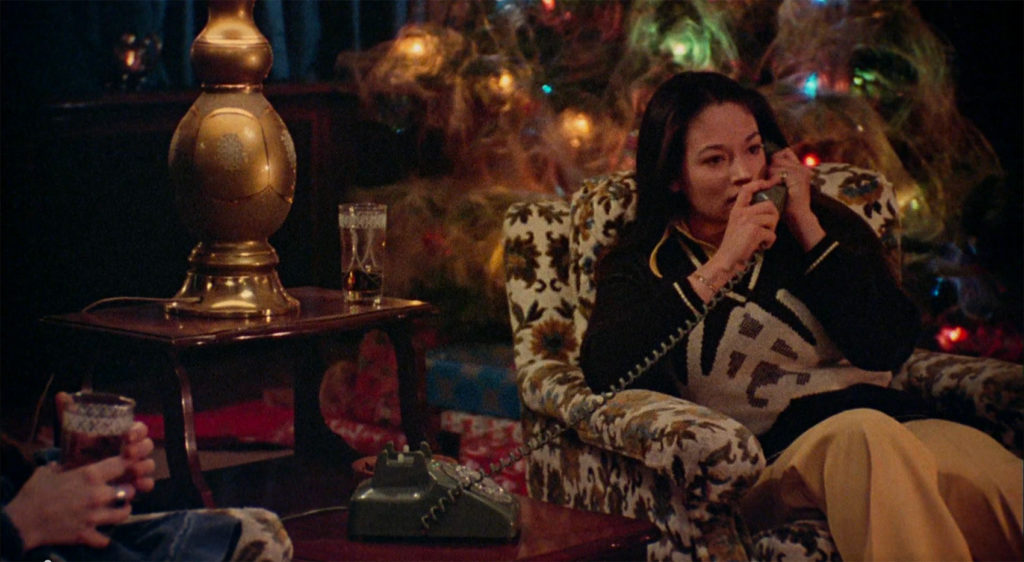
I always say this is my favorite slasher movie ever, and it definitely is, but it’s also my favorite Christmas movie and may just be my favorite horror movie ever, too. I love it that much.
This movie has a rawness to it still shocking to this day, so imagine the shock in the ’70s. These are sorority girls in this movie, but not like the sorority girls in ’80s slasher movies, who are more just a male sexual fantasy of sorority girls. These girls are smart, and the assault on them is more than just a killer. It’s the sexualized way the phone calls treat them, basically saying they want to rape them. It’s the battle over the agency of their bodies. It’s tackling abortion straight on a year after Roe v. Wade was passed. (I get it’s a Canadian movie, but it takes place in the U.S.) And it’s women fighting over what they want for their careers and dreams instead of getting married to overbearing men.
Gene Siskel famously said the slasher movement was a repercussion of the sexual revolution. He criticized them, saying they were Reaganism telling women to get back in the kitchen and stop being promiscuous. I love slashers and say that wasn’t what they were saying but rather what they were reflecting in society. I feel that battle between progress and regress shown in slashers started in Black Christmas. The women are openly sexual and are not only being stalked by a pervert who says explicitly sexual things. They have police who don’t believe them (specifically Doug McGrath’s character, not John Saxon’s), and they have conservative fathers constantly judging them. They also have controlling boyfriends with behavior so overbearing they are indistinguishable from the killer, to the point he’s the main suspect.
Just a masterpiece.
The Holiday
DIRECTED BY NANCY MEYERS/2006
By Taylor Blake
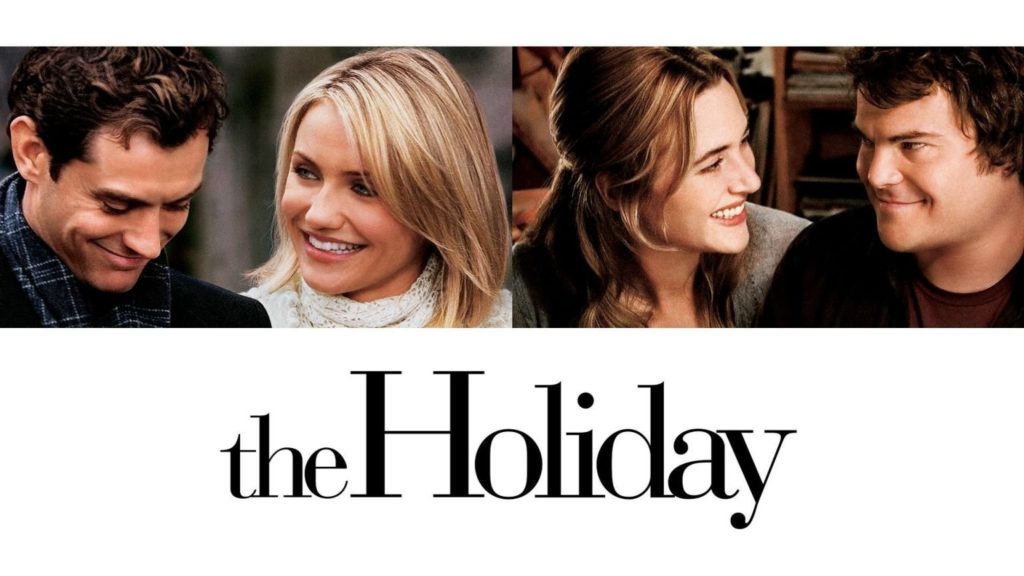
Sometimes when people mention they like romantic comedies, their voice skews into an ironic tone, hedging their words as if this admission deserves a priest-worthy confession. Well, friends, you won’t get this from me anymore! Somewhere in growing up, I received a message that romantic comedies are silly and contrived; at best they’re fluff, and at worst they’re insulting, creating unrealistic expectations for happily ever afters. But instead of “growing out of” this genre, I’ve only leaned into to it as I’ve aged. With laughter comes joy, and with romance comes hope, and friends, anything that brings joy and hope isn’t frivolous, especially at Christmastime.
The Holiday is one of the best modern solicitors of those feelings in the genre. In this Nancy Meyers-written/directed feature, Amanda (Cameron Diaz) and Iris (Kate Winslet) are both struggling with burnout and disappointing love lives on opposite sides of the pond. Through the magic of very ‘00s technology, they meet online and decide to switch homes for two weeks. Diaz will leave her posh Los Angeles pad and demanding film industry career for Christmas, while Winslet will abandon her cottage in Surrey and a newly-engaged ex (Rufus Sewell) through New Year’s. They both intend to run away from their problems, but they end up running into new chances for happiness: Amanda meets Iris’s brother, Graham (Jude Law), and Iris befriends a composer, Miles (Jack Black), and her elderly neighbor, Arthur (Eli Wallach).
The poster for the film, with two smiling couples in cozy sweaters and chic scarves, only previews a few of the relationships in this story. Amanda and Graham’s instant chemistry makes me swoon, and Miles’s silliness lifts my spirits as much as Iris’s, but the best romances are the ones our leading ladies fall into with themselves. They both start the movie knowing how to give to others but must learn to develop identities not based on their careers or others’ opinions. As Arthur says, “In the movies we have leading ladies and we have the best friend. You, I can tell, are a leading lady, but for some reason you are behaving like the best friend.” After all, you are supposed to be the leading lady of your own life!
In the decade-plus of watching The Holiday over and over, I’ve fluctuated between connecting more with workaholic Amanda or doormat Iris, but my love for their overlapping stories has only swelled. Every time Hans Zimmer’s honeyed piano score falls over the opening credits, I settle in for two hours of the best Christmas comfort food you could ask for, starting with the simple aesthetic pleasures of two beautiful homes and then digging into deeper truths about how each person’s presence matters and that we are more than our imperfections and vulnerabilities.
Like Iris, “I’m looking for corny in my life,” which means I watch this movie year-round—I need the kind of joy and hope this movie brings in April as much I do at Christmastime. I’m working on memorizing her “very square peg, very round hole” speech, I want to watch every movie Arthur and Miles recommend, and someday I plan to cozy up with hot cocoa in England just like Amanda. And if I never achieve those goals, well at least I’ve had the pleasure of meeting Mr. Napkin Head over and over again.

